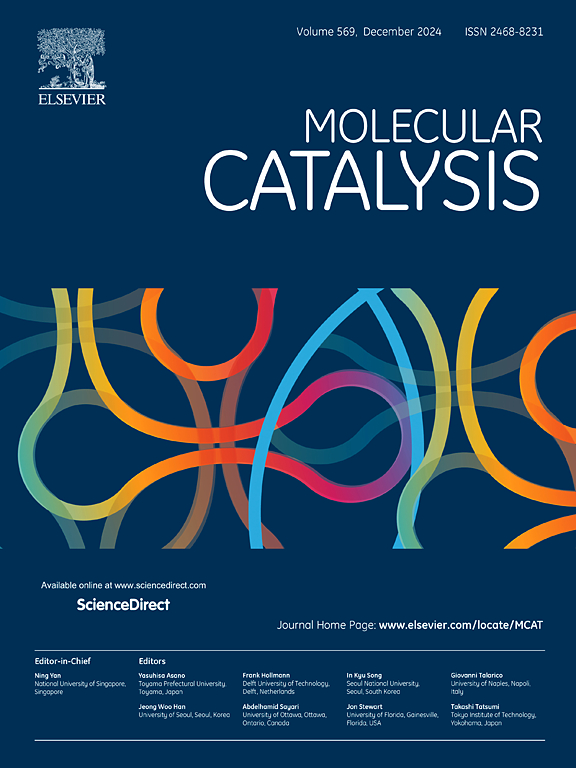Effect of NH3-assisted Cu-modified NaX catalysts on acid-base property and their synergy in side chain alkylation of toluene with methanol
IF 3.9
2区 化学
Q2 CHEMISTRY, PHYSICAL
引用次数: 0
Abstract
Achieving an optimal acid-base synergy and uniform dispersion of active sites on catalyst surface is essential for high catalytic performance in the side chain alkylation of toluene with methanol (SATM). Herein, we report that ammonium (NH₃) treatment of Cu-modified NaX zeolite catalysts effectively modulates acid-base properties and enhances the dispersion of Cu active sites across the catalyst surface. A series of Cu-modified catalysts were prepared with and without NH₃ treatment and further modified with NaOH to evaluate their synergistic effects. Comprehensive characterization techniques, including Scanning Electron Microscopy (SEM), HAADF-STEM and EDS, Pyridine FTIR, Temperature-Programmed Desorption of NH₃ (TPD-NH₃), X-ray Photoelectron Spectroscopy (XPS O 1 s), and regression analysis, were used to correlate catalyst structure, and acid-base property and nature of acid sites with catalytic performance. Results reveal that NH₃ incorporation into the Cu-modified NaX framework significantly enhances catalytic efficiency by tuning acid-base properties and promoting a homogeneous distribution of Cu active sites. Notably, the 3Cu-4Na-N catalyst achieved a superior yield of ethylbenzene and styrene production, reaching 84.9 %, compared to 64.3 % for the 3Cu-4Na catalyst under identical conditions. Methanol conversion reached 97.7 %, with the catalyst demonstrating robust stability over 168 h of operation. Additionally, 3Cu-4Na-N catalyst exhibited the highest turnover frequency (TOF) reaching 27.3 h-1, confirming its superior intrinsic activity. This study highlights the critical role of NH₃ in advancing Cu-NaX catalysts for SATM and provides a promising strategy for optimizing catalytic performance through controlled acid-base interactions and active site dispersion.

求助全文
约1分钟内获得全文
求助全文
来源期刊

Molecular Catalysis
Chemical Engineering-Process Chemistry and Technology
CiteScore
6.90
自引率
10.90%
发文量
700
审稿时长
40 days
期刊介绍:
Molecular Catalysis publishes full papers that are original, rigorous, and scholarly contributions examining the molecular and atomic aspects of catalytic activation and reaction mechanisms. The fields covered are:
Heterogeneous catalysis including immobilized molecular catalysts
Homogeneous catalysis including organocatalysis, organometallic catalysis and biocatalysis
Photo- and electrochemistry
Theoretical aspects of catalysis analyzed by computational methods
 求助内容:
求助内容: 应助结果提醒方式:
应助结果提醒方式:


